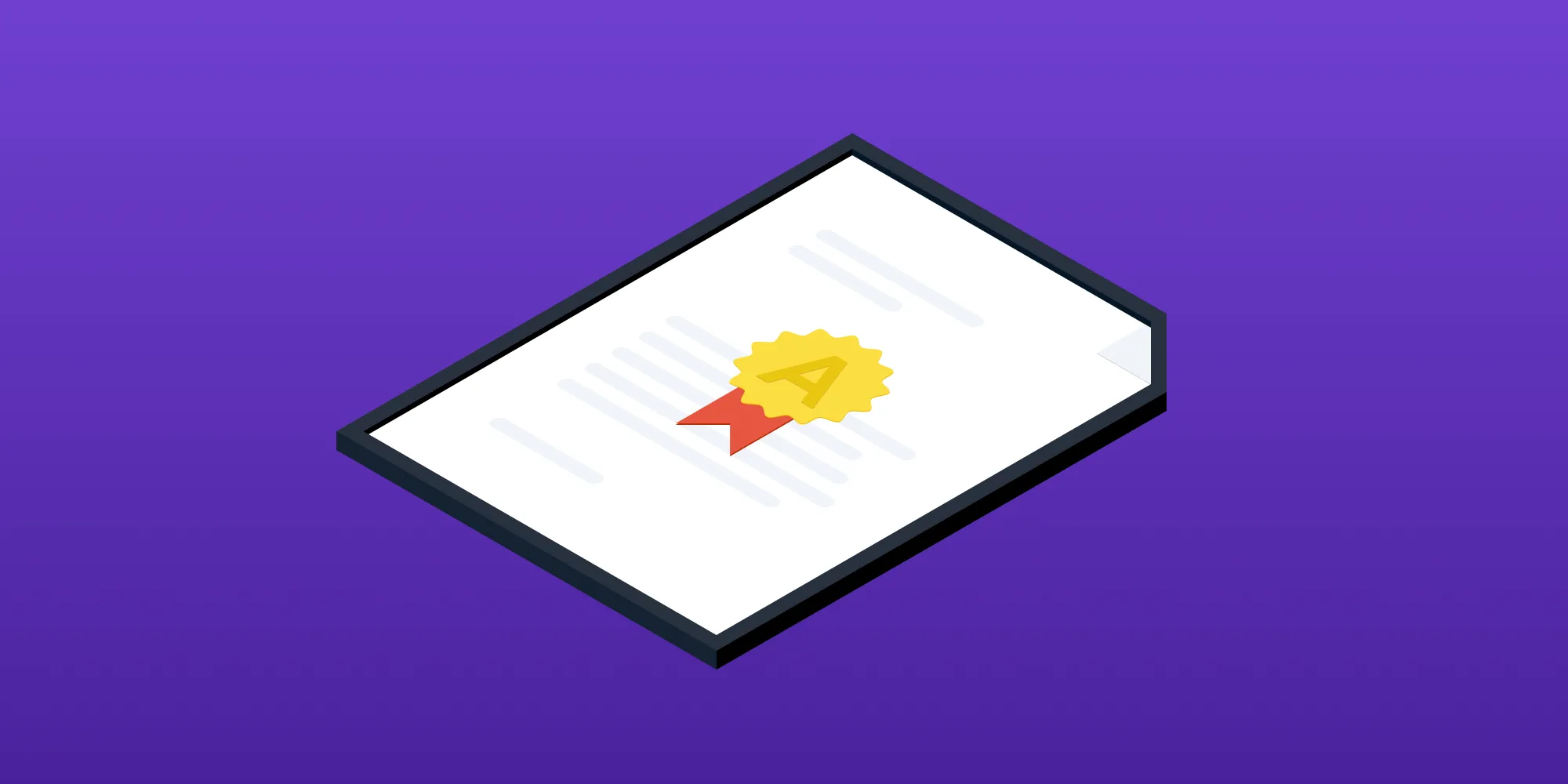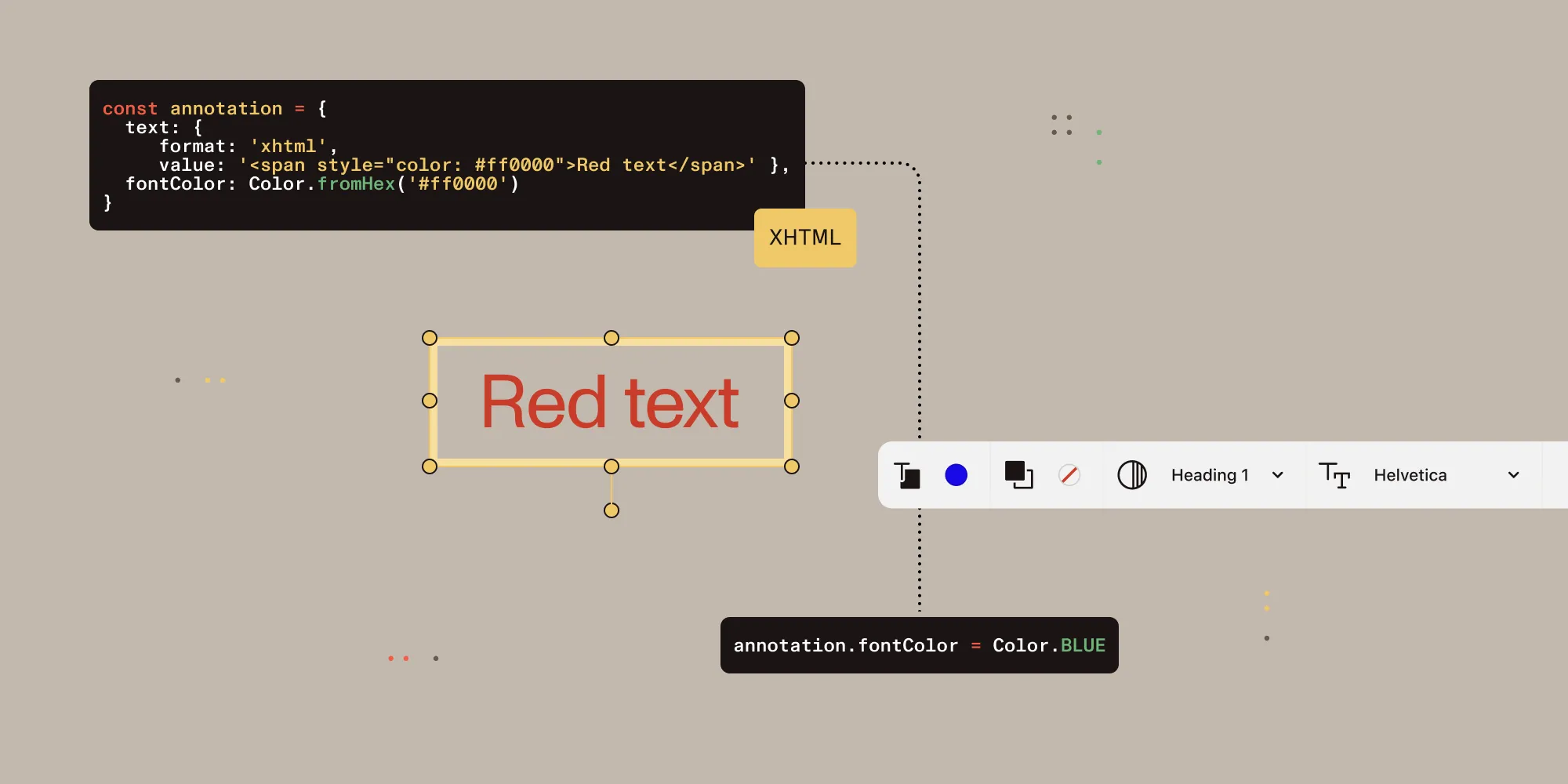Choosing the best PDF SDK: Open source vs. proprietary solutions
Table of contents

Working with PDFs is essential in modern applications — from creating and editing documents, to ensuring secure distribution. However, choosing the right tool for your project can be overwhelming. Should you opt for a commercial PDF SDK for its advanced features and support, or go with an open source library for greater flexibility and cost savings?
This article explores the key differences between these two categories, comparing top proprietary solutions and open source libraries like Nutrient(opens in a new tab), PDFium(opens in a new tab), and PDF.js(opens in a new tab).
Understanding these factors will help you align your choice of PDF SDK with your project’s technical and business goals, ensuring both short-term success and long-term sustainability. But how do you begin this process?
Step 1 — Defining your project requirements
The first step in selecting the right PDF SDK is to clearly outline your project’s specific needs and objectives. By identifying what your application requires, you can effectively evaluate SDK options and make an informed decision.
Key questions to ask
| Requirement | Details |
|---|---|
| Features needed | Basic (viewing, extracting text) or advanced (annotations, encryption, OCR, etc.)? |
| Scalability | Handle a few PDFs or process thousands daily? |
| Security needs | Compliance with regulations like GDPR or HIPAA? |
| Timeline | Strict deadlines requiring rapid integration of prebuilt features? |
| Budget | Can you afford a commercial solution, or do you need a cost-effective open source option? |
Step 2 — Comparing PDF SDKs and open source libraries
When evaluating your options for integrating PDF functionality into your application, understanding the differences between proprietary SDKs and open source libraries is critical.
Proprietary SDKs
Proprietary SDKs offer ready-to-use solutions for PDF functionalities. They’re ideal for projects prioritizing enterprise-grade reliability, advanced features, and reduced development time.
Key advantages
- Ease of integration — Prebuilt APIs, detailed documentation, and tutorials simplify setup.
- Advanced features — They often come with a rich set of built-in functionalities like OCR, digital signatures, encryption, collaborative tools, and advanced annotations. These features help streamline development for complex applications.
- Enterprise reliability — Optimized for high performance and scalability. Proprietary SDKs are typically better suited for handling large, complex PDF files and high-performance demands, such as large-scale document processing or simultaneous user access.
- Dedicated support and regular updates — Access to professional support teams ensures faster troubleshooting and guidance during integration. Regular updates guarantee compatibility with evolving standards, and enterprise agreements provide SLAs for issue resolution.
- Security and compliance — Often come with robust security features out of the box, ensuring compliance with industry standards like GDPR and HIPAA.
Open source libraries
Open source libraries, such as PDF.js and PDFium, provide a cost-effective and flexible approach to PDF development. These libraries are better suited for developers who prefer greater customization and have the resources for extensive development.
Key advantages
- Cost-effective — Free to use, but can incur higher development costs due to the need for customization and optimization.
- Customizable — Full access to the source code allows developers to tailor the SDK to specific needs, though advanced features (such as OCR or encryption) may require significant coding and additional resources.
- Community-driven support — Libraries like PDF.js benefit from active community support through forums and repositories. However, response times can vary, and the quality of updates may depend on community contributions.
- Performance and stability — Open source libraries can be very powerful but may struggle with performance under demanding use cases. Custom optimization may be required for effectively handling complex or resource-heavy documents. Stability can also vary depending on the library’s maturity and the involvement of contributors.
Side-by-side comparison
| Factor | Proprietary SDKs | Open source libraries |
|---|---|---|
| Cost | High (licensing fees) | Free, but may incur development costs |
| Features | Advanced (OCR, encryption, collaboration) | Basic, requiring custom additions |
| Support | Dedicated professional support | Community-driven, quality varies |
| Security | Built-in compliance tools | Manual implementation needed |
| Scalability | Optimized for large-scale operations | May require significant optimization |
| Performance | High performance, optimized for complex files | May need custom optimizations for demanding tasks |
| Time to market | Faster due to prebuilt functionality | Longer, requiring custom development |
Key features to consider
When narrowing down your options, focus on critical features that align with your project needs:
- PDF viewing and rendering — Essential for user interactivity, including zoom, pan, and bookmarks. Performance is crucial for handling large PDFs efficiently.
- PDF editing and conversion — Look for support for annotations, content modification, and format conversions, which may require custom development in open source libraries. Our PDF editor SDK provides these capabilities out of the box.
- Security features — Ensure robust encryption, digital signatures, and data redaction tools. Proprietary SDKs often provide these features out of the box, while open source options may require additional integration.
Step 3 — Matching tools to real-world scenarios
| Scenario | Use case | Recommendation |
|---|---|---|
| Enterprise document management | Requires security, annotations, and compliance tools | Nutrient |
| Small-scale web viewer | Needs a basic PDF viewer | Open source library (e.g. PDF.js) |
| Custom editor for niche features | Requires unique functionality for a niche industry | Start with open source, transition to SDK as needed |
Evaluating PDF SDKs
When choosing between proprietary and open source PDF SDKs, it’s crucial to assess your project’s needs. Proprietary solutions, like Nutrient, offer advanced features, reliability, and security for large-scale enterprise applications. Meanwhile, open source libraries like PDF.js are budget friendly and customizable but may lack the enterprise-level features of proprietary SDKs.
Closed source software (proprietary SDK) considerations
Proprietary SDKs, like Nutrient, typically involve licensing and maintenance fees. While they can be expensive, these solutions provide enterprise-grade tools, robust security, and dedicated support, making them a valuable investment for mission-critical projects.
Nutrient offers extensive customization, but this comes with the added benefit of support for complex features like form creation, annotations, and more, ensuring you get exactly what you need without building everything from scratch.
Nutrient stands out for offering high-quality, dedicated customer support(opens in a new tab), regular updates, and comprehensive documentation. This is especially crucial for organizations that need reliable, ongoing assistance.
With Nutrient, you can rest assured your PDFs are secure. It provides advanced features like encryption, digital signatures, and redaction, meeting the stringent security needs of enterprises handling sensitive data.
Open source libraries
While open source libraries are often cost-effective, they may require more development effort to meet the same level of security, performance, and customization that Nutrient provides out-of-the-box.
| Library | Advantages | Limitations |
|---|---|---|
| PDF.js | Free, highly customizable, active community | Limited advanced features, steeper learning curve |
| PDFium | Lightweight, good for basic viewing | Lacks enterprise-level tools and support |
Proprietary SDKs: In-depth analysis
Nutrient SDK
Nutrient is a powerful proprietary SDK designed for high-performance, enterprise-level applications. It provides an advanced set of features, making it an ideal choice for businesses with demanding PDF requirements.
| Key features | Description |
|---|---|
| Advanced rendering | Efficiently handles large and complex PDFs, ensuring smooth rendering, even with intricate elements like forms, annotations, and graphics. |
| Interactive features | Supports advanced interactivity, including form creation, annotation tools, version control, and PDF collaboration. |
| Security | Has built-in encryption, digital signatures, redaction, and compliance tools, providing robust protection for sensitive documents. |
| Cross-platform | Compatible with various programming languages and platforms, ensuring seamless integration across web and mobile environments. |
| Enterprise support | Offers dedicated customer support, comprehensive documentation, and regular updates, ensuring peace of mind for businesses relying on the SDK. |
Testing before committing
| Type | How to test |
|---|---|
| PDF SDKs | Use free trials to evaluate integration ease, performance, and advanced features like security and customization in real-world scenarios. |
| Open source | Experiment with sample projects to assess functionality and required customization efforts, knowing that Nutrient provides a more turnkey solution. |
Conclusion
When choosing between proprietary SDKs like Nutrient and open source libraries, consider the scale and complexity of your project.
- Nutrient — Best for enterprises or businesses needing advanced features, security, and reliability for high-performance PDF handling. With support for complex features like interactive forms, annotations, and enterprise-grade security, Nutrient offers a comprehensive solution out of the box.
- Open source libraries — Ideal for smaller-scale projects or those with budget constraints. While open source solutions like PDF.js can be customized, they may lack the high-end capabilities and support that Nutrient delivers.
By matching your project’s requirements with the right tool — whether it’s the advanced functionality of Nutrient or the flexibility of open source libraries — you can ensure optimal performance and results for your PDF-related needs.
Still unsure which solution fits your needs? Contact us to learn how Nutrient can transform your PDF workflows.
FAQ
Consider factors like required features, scalability, security needs, timeline, and budget when selecting the right PDF SDK.
Open source libraries offer greater customization, but they often require more development effort to implement advanced features, while proprietary solutions provide built-in tools with less coding.
Yes, proprietary SDKs like Nutrient can be used for small-scale applications, but they’re typically optimized for enterprise-level needs with additional features and support.
Most open source PDF SDKs are free to use, but you may need to handle additional customization and support, which can lead to higher development costs for commercial projects.
Proprietary PDF SDKs like Nutrient often come with built-in security features, such as encryption and digital signatures, and compliance tools like GDPR and HIPAA.







